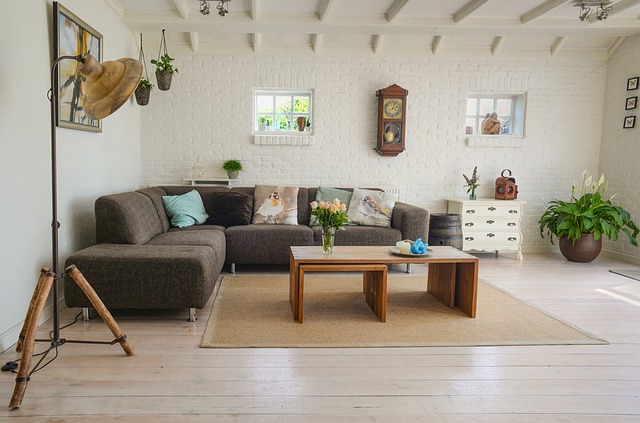
Your home is your sanctuary, and the furniture within it plays a crucial role in creating a comfortable and inviting atmosphere. Upholstered furniture, such as sofas, chairs, and ottomans, adds a touch of warmth and style to your living space. However, over time, these pieces can accumulate dirt, stains, and odors, diminishing their appeal.
Upholstered furniture typically consists of a frame, padding, and a covering material. The covering, commonly fabric or leather, is where dirt and stains tend to accumulate. Different upholstery materials require specific cleaning methods, so be sure to identify the fabric or material before embarking on your cleaning journey.
This comprehensive guide will walk you through the simple yet effective steps to clean and refresh your home’s upholstered furniture, breathing new life into your cherished pieces.
Click here to have a glance at our post on How to Clean Your Patio Furniture for Outdoor Entertaining
Types of Upholstery Fabrics
Before diving into the cleaning process, it’s crucial to identify the type of fabric used in your upholstery. Different fabrics require specific cleaning methods to avoid damage. Here’s a brief overview of common upholstery fabrics:
1. Natural Fabrics
- Cotton: Soft and breathable, but prone to wrinkling.
- Linen: Durable but may stain easily.
- Wool: Resistant to wrinkles and stains, but requires careful cleaning.
- Silk: Luxurious but delicate; spot-clean to avoid damage.
2. Synthetic Fabrics
- Polyester: Durable and resistant to stains.
- Nylon: Strong and resilient but may pill over time.
- Microfiber: Water-resistant and easy to clean.
- Vinyl: Ideal for easy cleaning but can crack over time.
The Cleaning Process
Step 1: Gather Your Cleaning Arsenal
To start, assemble your cleaning supplies. You’ll need:
- Vacuum Cleaner with Upholstery Attachment: Remove loose dirt and debris from the surface.
- Stain Remover: Choose a product suitable for your upholstery material.
- Mild Cleaning Solution: Mix a small amount of gentle detergent with water.
- Soft Bristle Brush: Ideal for scrubbing without causing damage.
- White Microfiber Cloths: Avoid colored cloths that may bleed onto the upholstery.
- Water Spray Bottle: To lightly dampen the fabric.
- Dry Towels: For blotting and absorbing excess moisture.
Step 2: Preparing for Cleaning
- Read Care Labels: Check for care instructions on your furniture. Follow any specific guidelines provided by the manufacturer.
- Test in an Inconspicuous Area: Before applying any cleaning solution, test it on a small, hidden section of the upholstery to ensure it won’t cause discoloration or damage.
- Remove Loose Debris: Vacuum the furniture using the upholstery attachment to eliminate loose dirt, dust, and pet hair.
See also our post on How to Deep Clean Your Mattress: A Comprehensive Guide
Cleaning Different Upholstery Materials
Cleaning Fabric Upholstery
Fabric upholstery comes in various textures and colors, requiring careful attention to preserve its appearance.
Stain Removal
- Blot Stains: Use a clean, white cloth to blot spills immediately, avoiding rubbing, which can spread the stain.
- Apply Stain Remover: Follow the product instructions to apply the stain remover. Gently blot with a cloth or sponge.
- Rinse Thoroughly: Dampen a cloth with water and blot the area to remove any residue. Ensure the fabric doesn’t stay overly wet.
General Cleaning
- Dilute Cleaning Solution: Mix a small amount of mild detergent with water.
- Lightly Dampen Fabric: Spray the cleaning solution onto a clean, white cloth or directly onto the upholstery, ensuring not to oversaturate.
- Gently Scrub: Use a soft bristle brush to scrub the fabric in a circular motion, paying attention to stained or soiled areas.
- Blot Excess Moisture: Immediately blot the cleaned areas with a dry towel to absorb excess moisture.
Cleaning Leather Upholstery
Leather furniture exudes sophistication but requires a different approach to cleaning.
Gentle Cleaning
- Dust Removal: Wipe the leather with a dry, soft cloth to remove surface dust and dirt.
- Mild Soap Solution: Mix a small amount of mild soap or leather cleaner with water.
- Dampen Cloth: Dip a clean, white cloth into the soapy solution and wring it out to ensure it’s only slightly damp.
- Wipe Gently: Wipe the leather surface gently, paying attention to creases and seams.
Conditioning
- Leather Conditioner: Apply a leather conditioner to maintain the material’s suppleness and prevent cracking.
- Buffing: Use a dry, soft cloth to buff the leather gently, enhancing its shine.
See also our post on A Comprehensive Guide to Green Cleaning for Outdoor Furniture which you will not want to miss.
Deodorizing Upholstered Furniture
Over time, upholstered furniture can develop unpleasant odors. Follow these steps to refresh and deodorize your beloved pieces.
Baking Soda Magic
- Sprinkle Baking Soda: Generously sprinkle baking soda over the upholstery, focusing on areas with odors.
- Let It Sit: Allow the baking soda to sit for at least 15-30 minutes, absorbing odors.
- Vacuum Thoroughly: Use the upholstery attachment on your vacuum cleaner to remove the baking soda completely.
See also our post on Beyond Baking Soda: Unconventional Cleaning Ingredients You Can Use
Deep Cleaning Methods
Steam Cleaning
- Invest in a quality steam cleaner to deep clean your upholstered furniture. Steam not only removes dirt and stains but also kills bacteria and allergens.
Professional Cleaning Services
- For heavily soiled or delicate fabrics, consider professional upholstery cleaning services. They have the expertise and equipment to revitalize your furniture without causing damage.
Maintaining Upholstered Furniture
Routine Care
- Regular Vacuuming: Make vacuuming a routine to prevent dirt buildup and maintain a fresh appearance.
- Rotate Cushions: If possible, rotate and flip cushions regularly to ensure even wear.
- Sunlight Exposure: Avoid placing upholstered furniture in direct sunlight, as it can cause fading.
Conclusion
In conclusion, transforming the look and feel of your home’s upholstered furniture is an achievable task with the right knowledge and approach. This comprehensive guide has walked you through the essential steps, from understanding the nuances of different upholstery fabrics to implementing practical cleaning and refreshing techniques.
The importance of protecting your upholstery cannot be overstated. Whether through fabric protectors or establishing household rules, safeguarding your furniture from potential damage is a proactive measure that pays off in the long run. Deodorizing techniques, such as fabric fresheners and baking soda, add the finishing touches, leaving your upholstery not only clean but also smelling fresh.
In essence, this guide serves as your go-to resource for maintaining a clean, refreshed, and inviting living space. Upholstered furniture, when properly cared for, becomes a lasting investment that enhances the overall ambiance of your home. By integrating these simple yet impactful practices into your routine, you’re not just cleaning furniture; you’re creating a comfortable and visually appealing haven for yourself and your loved ones.







